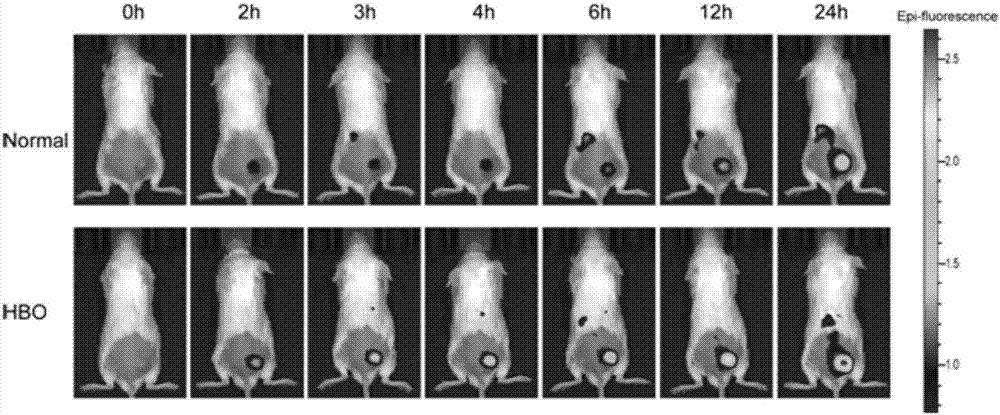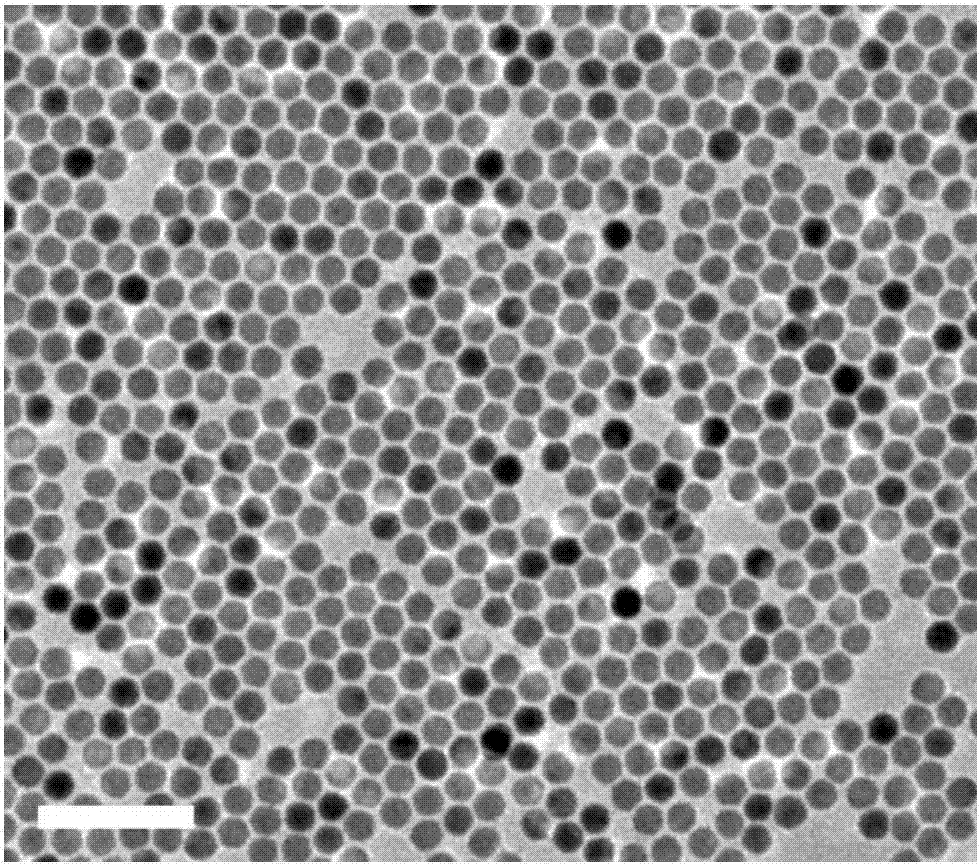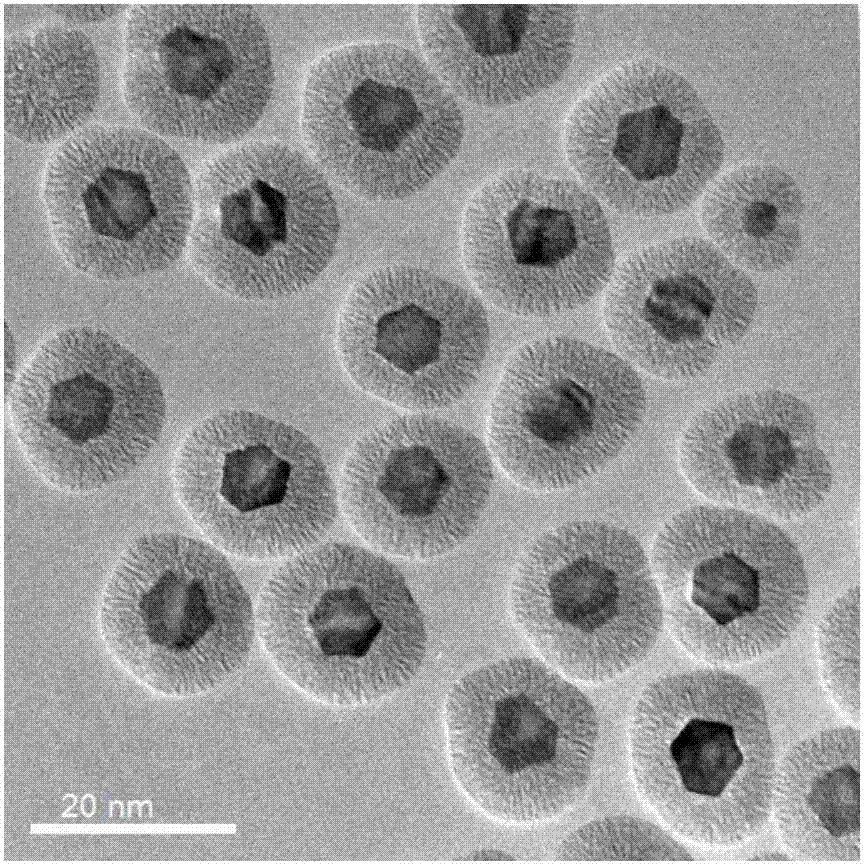Photodynamic therapy system and method of continuously generating singlet oxygen
A lanthanide and sandwich technology, applied in the field of photodynamic therapy system, can solve problems such as insufficient singlet oxygen and poor effect of photodynamic therapy system
- Summary
- Abstract
- Description
- Claims
- Application Information
AI Technical Summary
Problems solved by technology
Method used
Image
Examples
preparation example Construction
[0058] The preparation method of the above-mentioned lanthanide nanoparticles, comprising the steps of:
[0059] 1) Add oleic acid and octadecene to the mixture of gadolinium acetate, yttrium acetate, erbium acetate and calcium acetate, heat up to 130-160°C under an inert gas environment, and stir for 45-60 minutes to obtain solution A;
[0060] 2) Cooling the solution A to 20-30° C., adding a methanol solution of sodium hydroxide / ammonium fluoride dropwise to the solution A to obtain a solution B;
[0061] 3) Heating the solution B to 50-70°C, vacuuming to remove methanol, raising the temperature to 260-320°C at 5-20°C / min in an inert gas environment, and reacting for 30-50min to obtain oil-soluble NaGd (1-x-y-z) f 4 :Yb x , Er y , Ca z nanoparticle mixture;
[0062] 4) the oil-soluble NaGd (1-x-y-z) f 4 :Yb x , Er y , Ca z Cool the nanoparticle mixture to 20-30°C, add 2-4 times the volume of ethanol, and centrifuge to obtain oil-soluble NaGd (1-x-y-z) f 4 :Yb x ...
Embodiment 1
[0088] Preparation of NaGd 0.7 f 4 :Yb 0.18 , Er 0.02, Ca 0.1 @NaYb 0.9 f 4 : Ca 0.1 @NaNd 0.6 f 4 :Gd 0.3 , Ca 0.1 @mSiO 2 -Rose Bengal
[0089] 1.1 Preparation of NaGd 0.7 f 4 :Yb 0.18 , Er 0.02 , Ca 0.1
[0090] 1) Weigh 0.7mmol of gadolinium acetate, 0.18mmol of yttrium acetate, 0.02mmol of erbium acetate, and 0.1mmol of calcium acetate, add 4ml of oleic acid and 7ml of octadecene, heat up to 140°C under an argon atmosphere, and stir for 1h to obtain Solution A;
[0091] 2) Cool solution A to room temperature, add 10ml of methanol solution containing 4mmol sodium hydroxide / ammonium fluoride dropwise to solution A with a peristaltic pump, control the speed of the peristaltic pump, and adjust the dropping rate to 0.3ml / min to obtain solution B ;
[0092] 3) Solution B was heated to 60°C, vacuumed to remove methanol, heated to 280°C at 10°C / min under argon atmosphere, and reacted for 60 minutes to obtain oil-soluble NaGd 0.7 f 4 :Yb 0.18 , Er 0.02 , Ca...
Embodiment 2
[0116] NaGd 0.73 f 4 :Yb 0.2 ,E r0.02 , Ca 0.05 @NaYb 0.95 f 4 : Ca 0.05 @NaNd 0.65 f 4 :Gd 0.3 , Ca 0.05 @mSiO 2 or
[0117] NaGd 0.7 f 4 :Yb 0.2 ,E r0.05 , Ca 0.05 @NaYb 0.95 f 4 : Ca 0.05 @NaNd 0.65 f 4 :Gd 0.3 , Ca 0.05 @mSiO 2 It can also be prepared according to a method similar to Example 1. The particle size of the oil-soluble nanoparticles of the present invention is regulated by adjusting the reaction temperature and time. The higher the temperature and the longer the reaction time, the larger the particle size of the oil-soluble nanoparticles .
PUM
 Login to View More
Login to View More Abstract
Description
Claims
Application Information
 Login to View More
Login to View More - R&D
- Intellectual Property
- Life Sciences
- Materials
- Tech Scout
- Unparalleled Data Quality
- Higher Quality Content
- 60% Fewer Hallucinations
Browse by: Latest US Patents, China's latest patents, Technical Efficacy Thesaurus, Application Domain, Technology Topic, Popular Technical Reports.
© 2025 PatSnap. All rights reserved.Legal|Privacy policy|Modern Slavery Act Transparency Statement|Sitemap|About US| Contact US: help@patsnap.com



